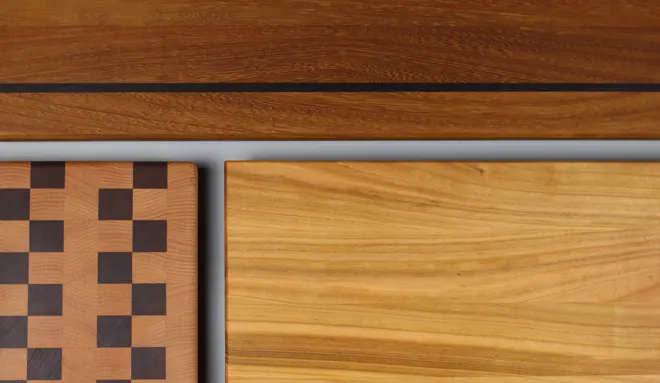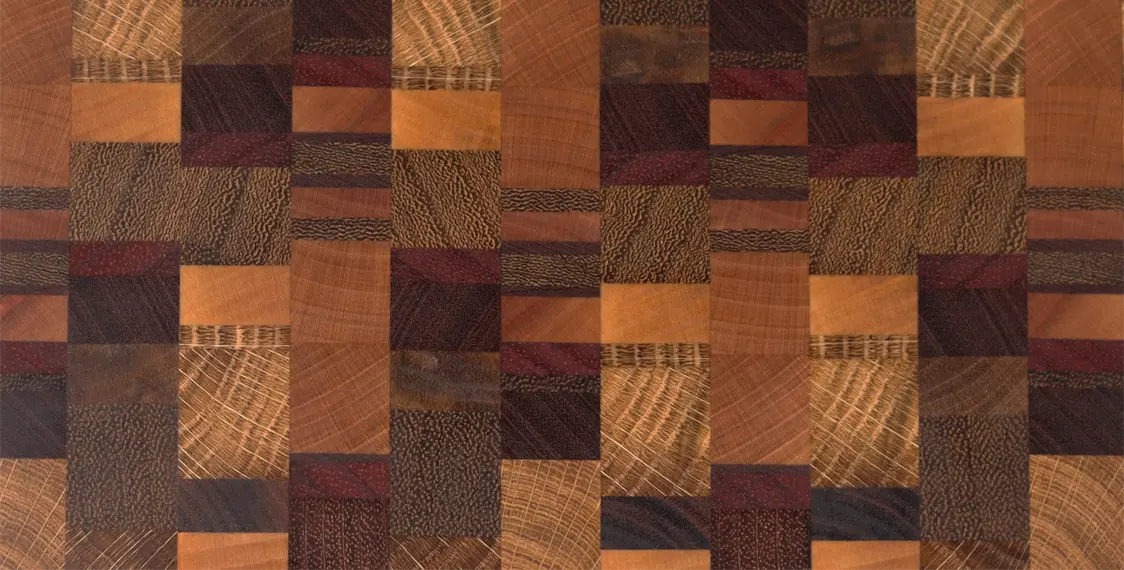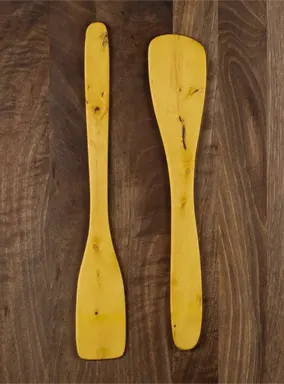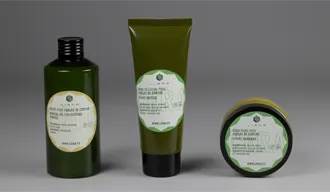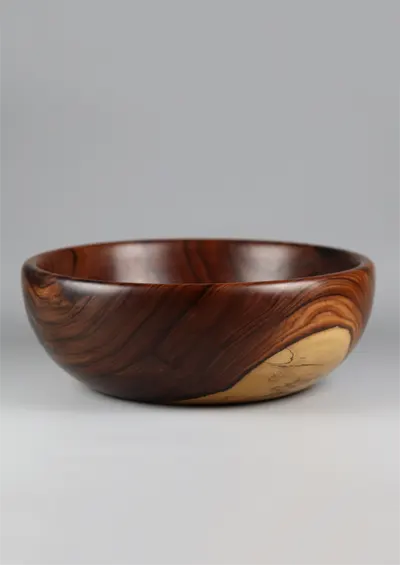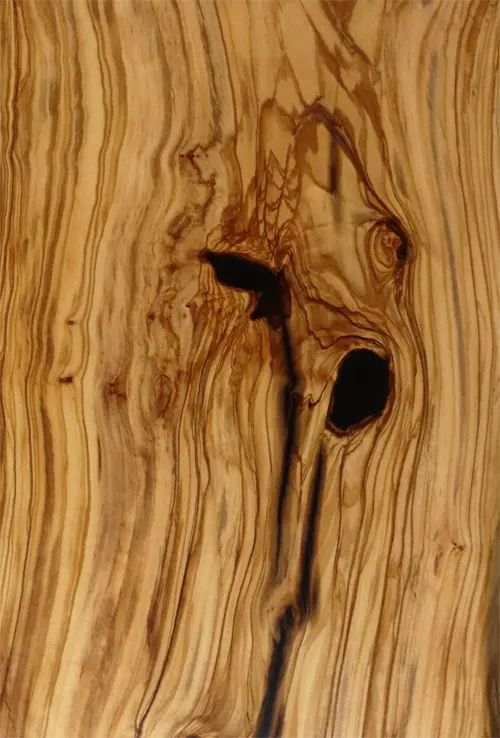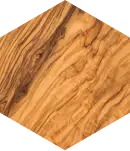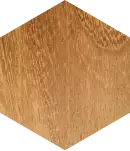Tu carrito está vacío.
Wood Species
Discover the differences between the
cutting boards built with end grain and end grain.
For us, the selection of wood for our cutting boards is essential.
We work with a variety of woods, selected for their beauty and natural properties.
Each wood brings unique characteristics to our cutting boards.
Hardwoods
Hardwoods are known as hardwoods that come from temperate climate trees that are not conifers, such as oak, maple and walnut. These woods are known for their density and strength, making them an ideal choice for cookware that stands up to daily use.
In most cases, these woods are highly available on the market (except for olive and boxwood) and are considered, a priori, a sustainable resource.
Walnut
The dark leafy wood par excellence. Stable and of medium hardness. Its high demand has made it an expensive and coveted wood.
Cherry
One of the most beautiful and popular hardwoods. Stable wood with a very fine grain. We use European and American cherry.
Hard Maple
From the American continent. The wood par excellence for economical, high quality and durable cutting boards.
European Oak
Hardwood with antibacterial properties due to its tannin content. Its use is widespread in all areas.
Olive tree wood
Emblem of the Mediterranean. It presents extraordinary veins. Wood scarce, heavy, not very stable and coarse-grained.
Birch
Light wood of medium density. Easy to work and with high availability. We work mainly with contaminated birch.
Holm oak
Heavy, hard and resistant wood. Holm oak wood, usually used as firewood, has remarkable veins and shades.
Beech
Versatile and economical wood. Even with low dimensional stability, its low porosity makes it suitable for kitchen utensils.
Boxwood
Considered the stainless steel of woods, boxwood stands out for its very high density and low porosity.
Tropical woods
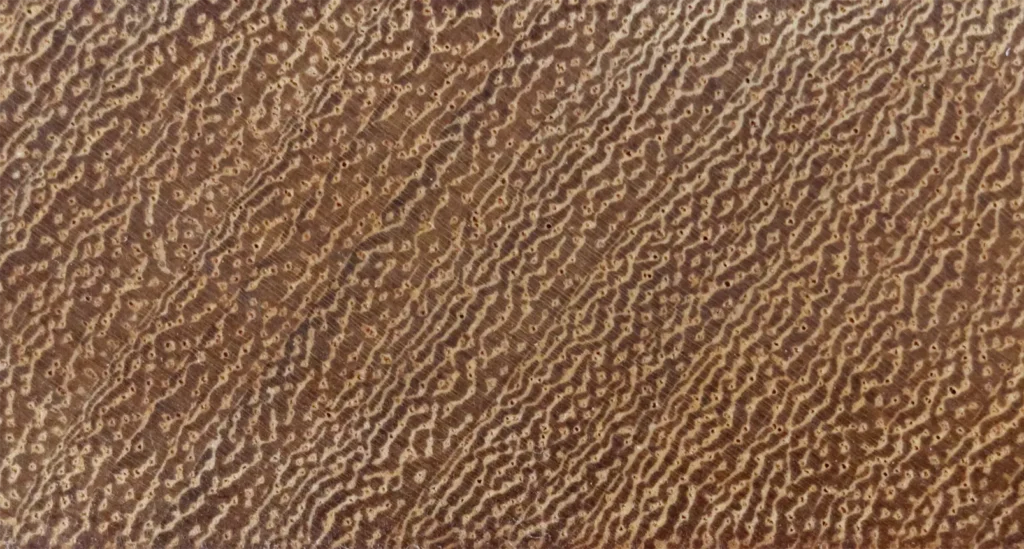
Tropical woods are those from regions such as Africa, Asia or South America.
These woods are prized for their wide variety of colors and grains, as well as for the high durability of many of them. In most cases, tropical woods are naturally more resistant to humidity and temperature changes.Their availability varies greatly from species to species: from highly available, such as sapele or iroko, to low availability, such as wenge or bubinga (CITES II).
Some of our tropical woods, due to their low availability and exceptional beauty, are used only for small details and to highlight other woods.
These woods are prized for their wide variety of colors and grains, as well as for the high durability of many of them. In most cases, tropical woods are naturally more resistant to humidity and temperature changes.Their availability varies greatly from species to species: from highly available, such as sapele or iroko, to low availability, such as wenge or bubinga (CITES II).
Some of our tropical woods, due to their low availability and exceptional beauty, are used only for small details and to highlight other woods.
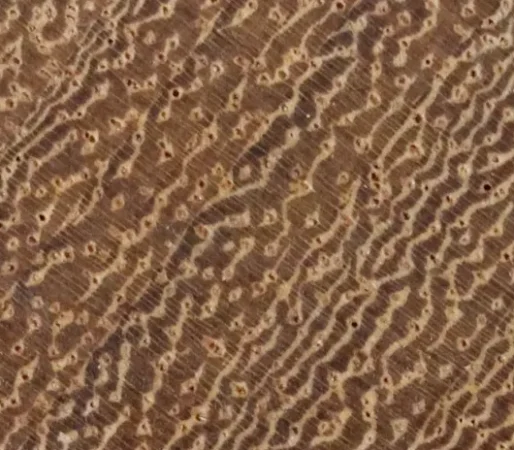
Wenge
Wood with dark black-brown tones. Exceptional mechanical qualities. Scarce wood inscribed in CITES II.
Iroko
Wood from Africa that has established itself as a substitute for teak. High availability and relatively low cost.
Sapele
One of the most affordable and widely used exotic woods. Good dimensional stability and attractive reddish brown tones.
Sucupira
Heavy and resistant wood, often used for floors and boat decks. Very intense grain. We use it as an accent in multicolored boards.
Jatoba
One of the most resistant woods in our collection. Very dense and hard. High resistance to wear and tear and daily use.
Mongoy
Rare exotic wood for cutting boards. Striking veins and shades. Good dimensional stability and moisture resistance.
Bubinga
Extraordinary wood for its beauty, density, hardness and resistance. Used in special projects. Scarce wood inscribed in CITES II.
Padouk
Affordable deep red wood. With time and exposure to UV rays it turns brownish, losing its initial attractiveness.
Zebrano
Wood whose name is given by the resemblance of its veins with the colors of the Zebra. Scarce and coveted wood. Very high price.
Kotibe
Wood from West Africa, very appreciated in cabinetmaking. We reserve it for trays and other accessories.
Curupay
Very dense and hard wood. Its dark tones and durability make it extremely attractive for service boards and quality accessories.
Free shipping to Spanish Mainland
and Balearic Islands from 100 €.
Secure Online Payment Credit Card and Paypal
Free shipping to mainland Spain and Balearic Islands over 100€.
Secure Online Payment
